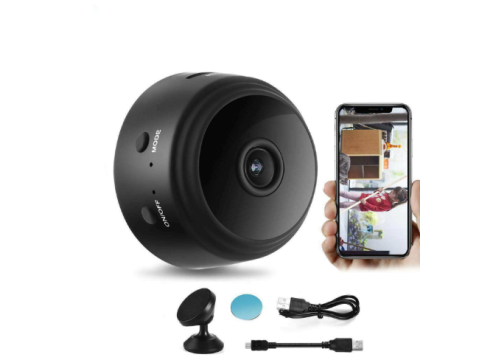How Mini Security Cameras Work
Mini security cameras operate similarly to larger models but come with distinct limitations due to their compact design and affordability. Below, we’ll explore the functionality, features, and practical considerations of using these devices.
Core Components of Mini Cameras
- Lens (Objective): Determines image clarity and field of view. High-quality lenses improve image resolution but may raise the camera's cost.
- Image Sensor: Converts light into electronic signals, forming the basis of video quality. Budget mini cameras often compromise on sensor quality, resulting in lower resolution.
- Processing and Transmission Board: Encodes and sends video signals to connected devices via cables or wireless protocols.
These components collectively determine the camera's overall performance.
Limitations of Mini Cameras
1. Misleading Specifications
Manufacturers often overstate capabilities, such as resolution or battery life. Many mini cameras achieve advertised resolutions through interpolation rather than actual hardware capability.
2. Battery Life
Compact designs limit battery capacity, reducing operating times to as little as 20-30 minutes under continuous use, despite claims of 100+ minutes.
3. Infrared (IR) Performance
- Budget models offer limited IR illumination, usually effective only within a 2-meter range.
- Inexpensive IR LEDs often emit visible light, compromising stealth.
How Mini Wireless Cameras Operate
Wireless mini cameras use technologies like Wi-Fi to transmit video data without cables. However, performance depends heavily on:
- Transmitter Power: Determines the range of data transmission.
- Antenna Design: Small antennas in mini cameras are often inefficient, limiting reliable transmission to short distances, especially through walls or obstructions.
Common Features of Mini Cameras
- Night Vision: Often limited by weak IR illumination, making them less effective for nighttime use.
- Motion Detection: Triggers recording when movement is detected, optimizing storage but requiring precise calibration.
- Recording Functionality: Many models record directly to microSD cards, but storage capacity and battery constraints limit usefulness.
Practical Applications of Mini Wireless Cameras
- Discreet Monitoring: Ideal for scenarios where subtle surveillance is required, such as monitoring entryways or small rooms.
- Temporary Installations: Easy to install and reposition due to their lightweight and wireless nature.
- Supplementary Security: Works best as an add-on to existing systems rather than a standalone solution.
Limitations of Mini Wireless Cameras for Serious Surveillance
While functional, mini cameras often fall short for professional surveillance due to:
- Low Image Quality: Often insufficient for detailed observation or evidence gathering.
- Short Operating Range: Ineffective for monitoring large areas or overcoming structural barriers.
- Limited Battery Life: Requires frequent recharging or external power sources.
Conclusion
Mini wireless security cameras are functional devices suitable for basic or temporary surveillance needs. However, understanding their limitations is crucial for aligning expectations with performance. When choosing a mini camera, focus on realistic specifications and intended usage scenarios to maximize effectiveness.
For serious surveillance needs, consider professional-grade alternatives with higher resolution, extended battery life, and robust wireless capabilities.

